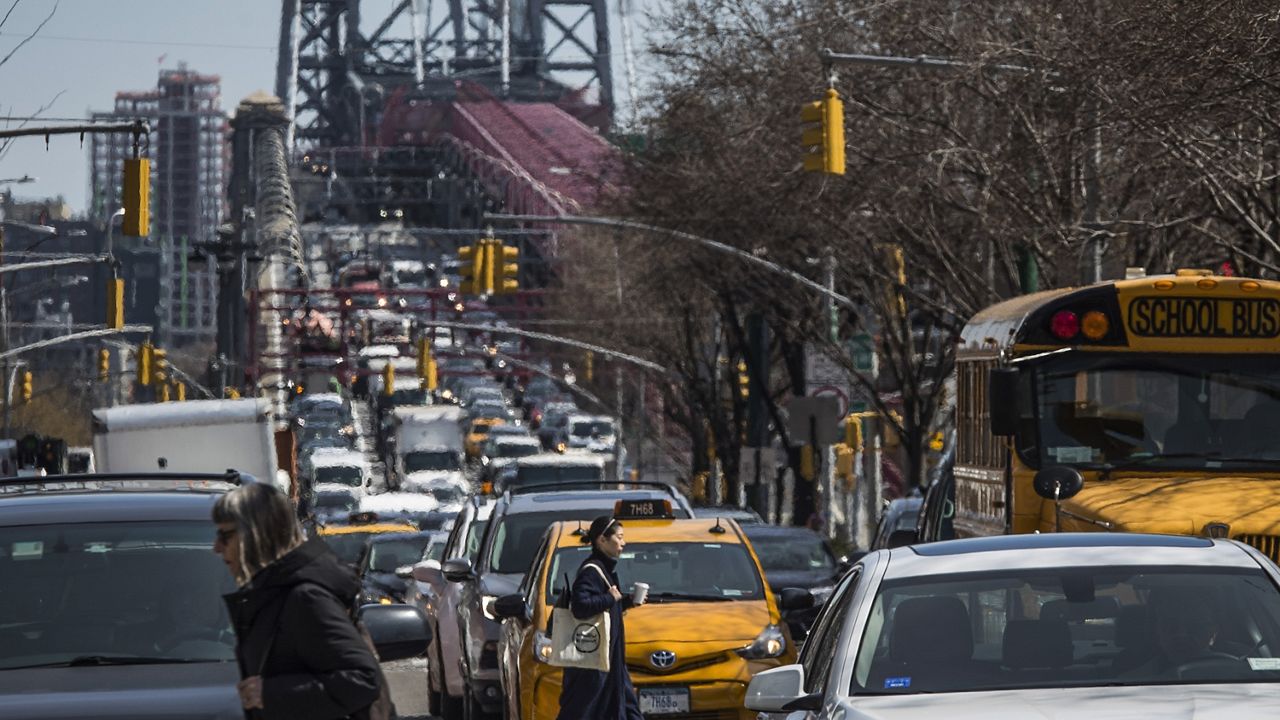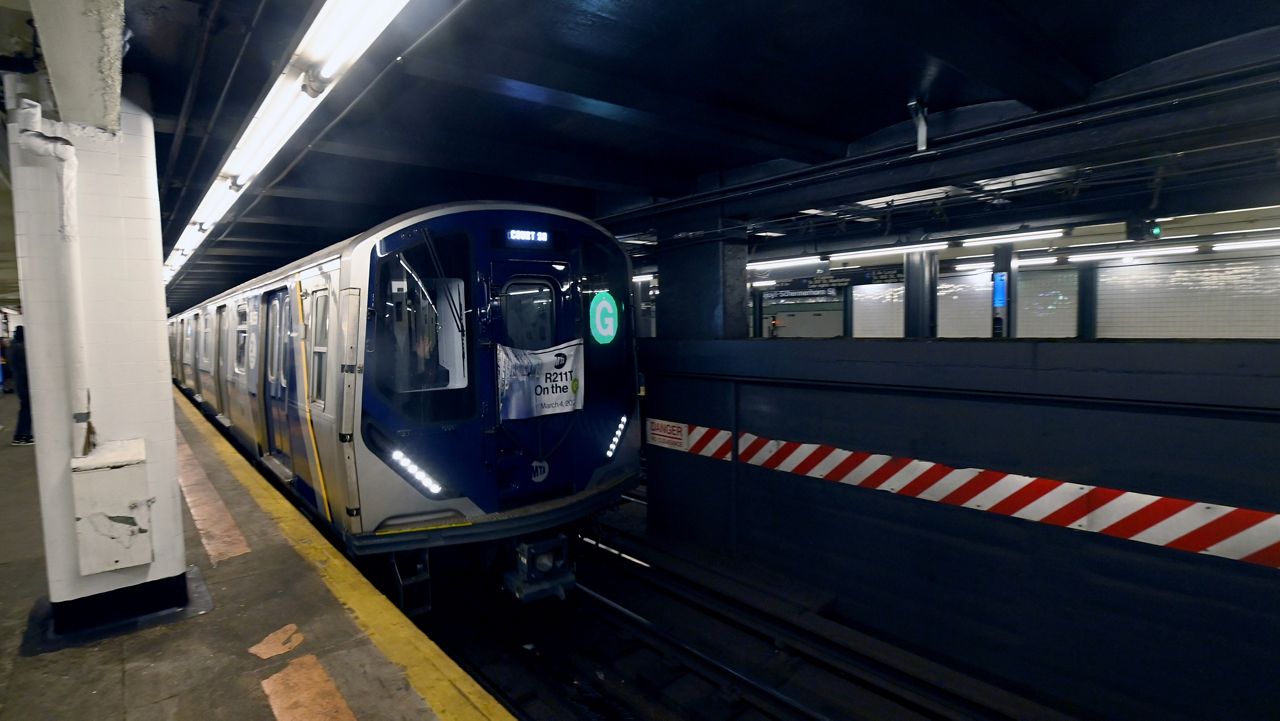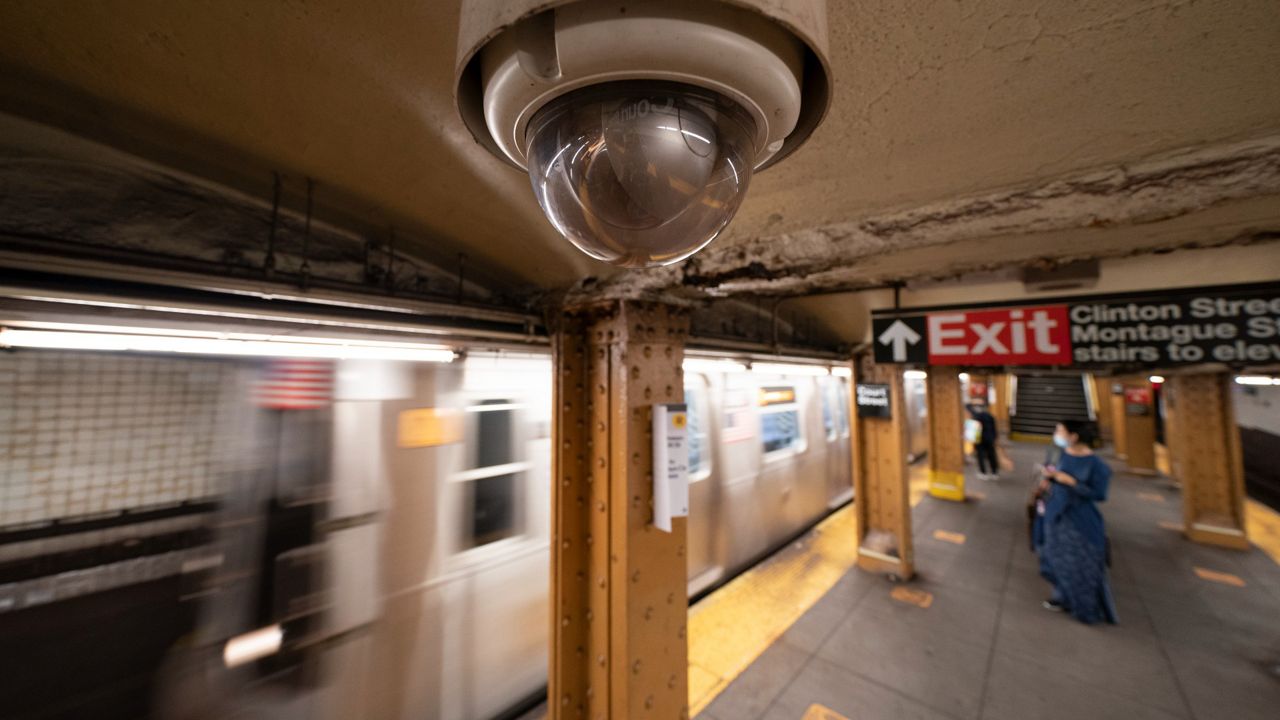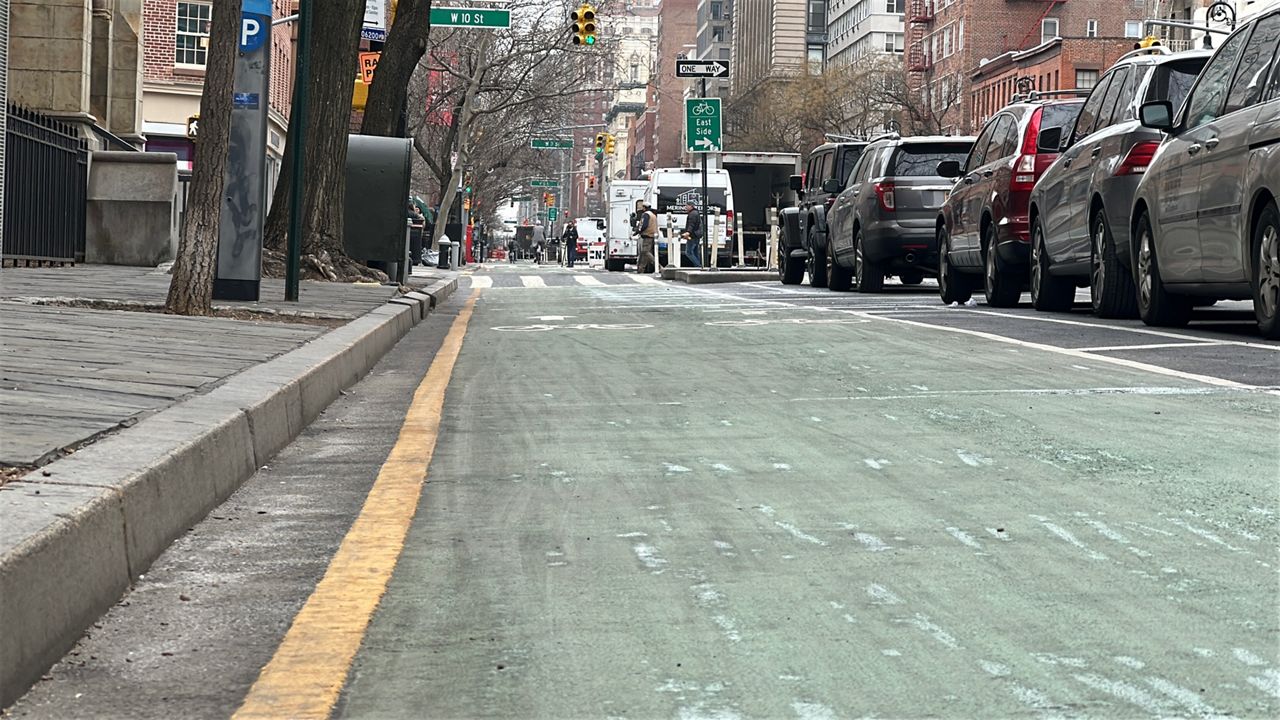The city's Department of Transportation is planning to implement a new rule barring any "peddler, vendor, hawker or huckster" from setting up on the pedestrian or bike lane of any bridge around the five boroughs.
That could change the landscape of the Brooklyn Bridge.
Gerson Vela told NY1 he stays up all night guarding his cart, as usual, preparing to sell his New York City wares to anyone walking by.
What You Need To Know
- The city's Department of Transportation has drafted a proposal for a rule banning vendors from bridges, citing safety and security risks
- According to the city, twice the amount of people crossed the Brooklyn Bridge from 2021 to 2022 on an average fall day
- The DOT said congestion gets worse when the width of the walking space gets smaller, from 16 feet to 5 feet once vendors are added
“It's very frustrating. We live off of this because some of us are immigrants, the majority are migrants, and if they don't let us work here, we have to look for where to work,” Vela said.
Tourists may be the main trade, but many people on their way to work Wednesday morning said, “Let them stay.”
"I dont think they should be reduced or removed. I like the vendors. I think it adds a little spice,” Manhattan resident Daniel Gieck said.
“It's sort of cute, because I've seen the tourists walking by and buying stuff," Brooklyn resident Beverley Walker added. "But it's when you have the unauthorized ones that come on, and I think that's what creates the bottleneck."
It’s that congestion which the DOT said is one of the big problems. According to the city, twice the amount of people crossed the Brooklyn Bridge from 2021 to 2022 on an average fall day.
The city said the problem gets worse when the width of the walking space gets smaller, from 16 feet to 5 feet once vendors are added.
“There’s probably a way in the middle. I enjoy the bridge. I enjoy it. I enjoy walking. It does get crowded," Manhattan resident Chris Walker said.
In a statement, the DOT said in part, “The Brooklyn Bridge has been called America’s Eiffel Tower, and it’s important that all New Yorkers and the millions of people who visit our city each year can enjoy it without impediments to safety and pedestrian mobility.”
The DOT’s draft proposal for a rule banning vendors cites safety and security risks which include jeopardizing a safe exit off the bridge, concerns about the structural load the vendors add to the bridge and a possible national security risk.
Vela said he’s uncertain what that means for him. Until the rule is implemented, he plans to stand guard at his table overnight and sell during the day to make whatever money he can.
“When we come to this country, which treats us very well, they don't always give us work permission, and we have to find a way, and this is the only way that I have right now to work,” Vela said.
Back in April, the city's Department of Sanitation was also charged with vendor enforcement. That saw massive pushback from vendors and some elected officials.
The DOT has scheduled a virtual hearing on the proposed changes for Nov. 15.







